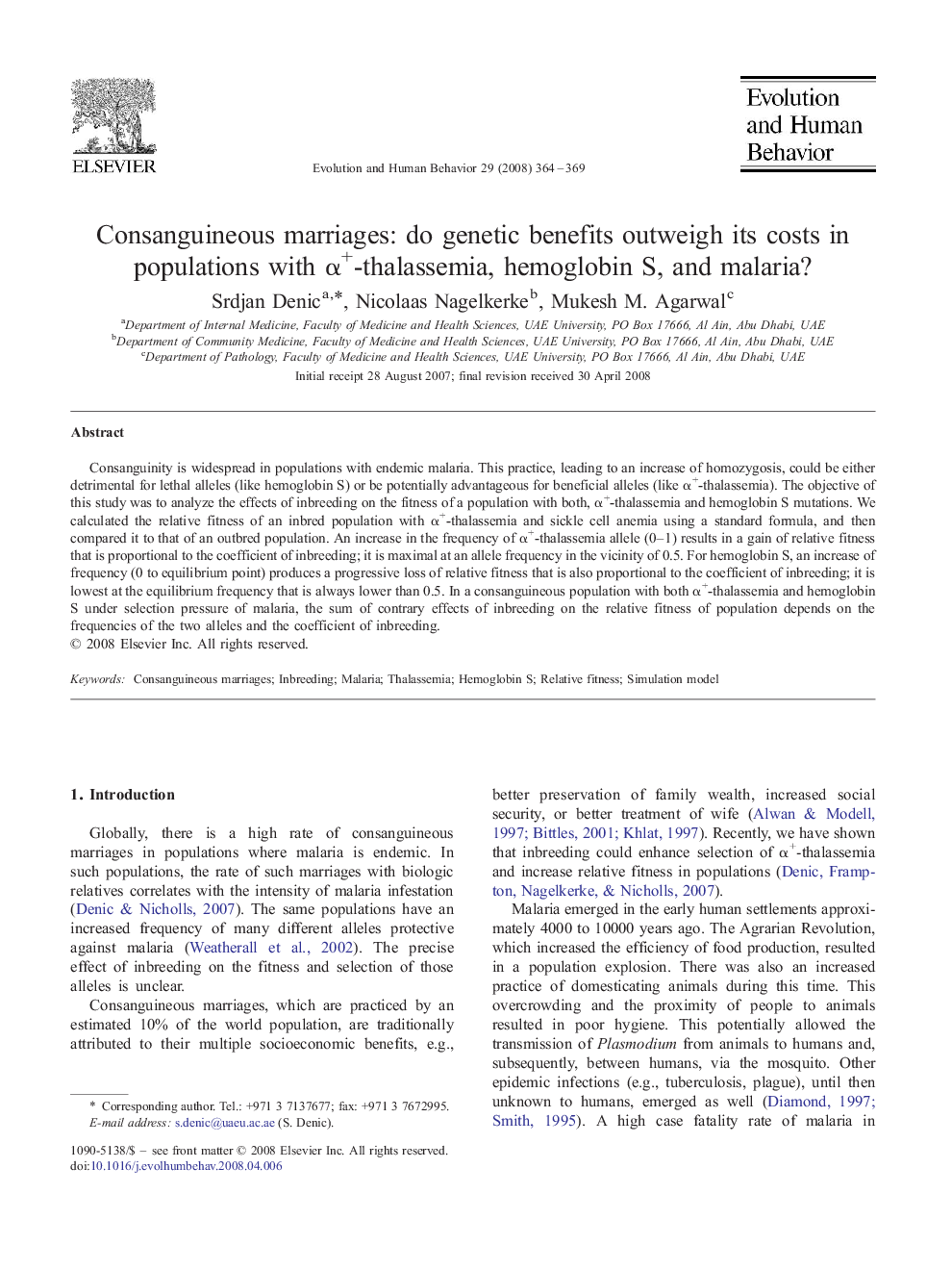| Article ID | Journal | Published Year | Pages | File Type |
|---|---|---|---|---|
| 943573 | Evolution and Human Behavior | 2008 | 6 Pages |
Consanguinity is widespread in populations with endemic malaria. This practice, leading to an increase of homozygosis, could be either detrimental for lethal alleles (like hemoglobin S) or be potentially advantageous for beneficial alleles (like α+-thalassemia). The objective of this study was to analyze the effects of inbreeding on the fitness of a population with both, α+-thalassemia and hemoglobin S mutations. We calculated the relative fitness of an inbred population with α+-thalassemia and sickle cell anemia using a standard formula, and then compared it to that of an outbred population. An increase in the frequency of α+-thalassemia allele (0–1) results in a gain of relative fitness that is proportional to the coefficient of inbreeding; it is maximal at an allele frequency in the vicinity of 0.5. For hemoglobin S, an increase of frequency (0 to equilibrium point) produces a progressive loss of relative fitness that is also proportional to the coefficient of inbreeding; it is lowest at the equilibrium frequency that is always lower than 0.5. In a consanguineous population with both α+-thalassemia and hemoglobin S under selection pressure of malaria, the sum of contrary effects of inbreeding on the relative fitness of population depends on the frequencies of the two alleles and the coefficient of inbreeding.
